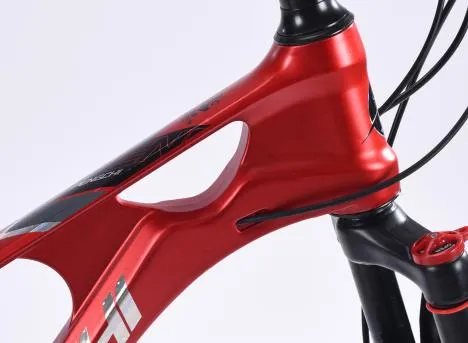
-
 Afrikaans
Afrikaans -
 Arabic
Arabic -
 Belarusian
Belarusian -
 Bengali
Bengali -
 Bulgarian
Bulgarian -
 Croatian
Croatian -
 Czech
Czech -
 Danish
Danish -
 Dutch
Dutch -
 English
English -
 Finnish
Finnish -
 French
French -
 German
German -
 Greek
Greek -
 hawaiian
hawaiian -
 Hebrew
Hebrew -
 Hindi
Hindi -
 Hungarian
Hungarian -
 Indonesian
Indonesian -
 irish
irish -
 Italian
Italian -
 Japanese
Japanese -
 Javanese
Javanese -
 kazakh
kazakh -
 Khmer
Khmer -
 Korean
Korean -
 Kyrgyz
Kyrgyz -
 Lao
Lao -
 Latin
Latin -
 Luxembourgish
Luxembourgish -
 Malay
Malay -
 Myanmar
Myanmar -
 Norwegian
Norwegian -
 Persian
Persian -
 Polish
Polish -
 Portuguese
Portuguese -
 Romanian
Romanian -
 Russian
Russian -
 Serbian
Serbian -
 Slovak
Slovak -
 Somali
Somali -
 Spanish
Spanish -
 Swedish
Swedish -
 Tagalog
Tagalog -
 Thai
Thai -
 Turkish
Turkish -
 Turkmen
Turkmen -
 Ukrainian
Ukrainian -
 Uighur
Uighur -
 Vietnamese
Vietnamese
ก.ย. . 25, 2024 15:26 Back to list
Guide to Choosing the Right Size for Children's Bikes
Sizing Children's Bikes A Comprehensive Guide
Choosing the right size bike for children is crucial for their safety, comfort, and overall enjoyment. A properly sized bike not only enhances their riding experience but also instills confidence as they navigate their surroundings. This guide will help parents understand the various factors involved in sizing children's bikes effectively.
Understanding Bike Sizes
Children's bikes come in different wheel sizes, typically ranging from 12 inches to 24 inches. The size of the bike is determined primarily by the diameter of its wheels. Generally, younger children, between the ages of 2 to 5, will require bikes with smaller wheels, such as 12 or 14 inches, which are ideal for balance and maneuverability. As children grow older, bike sizes increase, with 20-inch wheels being suitable for kids aged 5 to 8, and 24-inch wheels tailored for those aged 8 and up.
Measuring Your Child's Height
When sizing a bike, the child's height is an essential consideration. Most bike manufacturers provide a height chart that correlates a child's height with the appropriate bike size. For instance, children measuring between 36 to 42 inches are typically best suited for a 12-inch bike, while those measuring around 42 to 48 inches will find a 16-inch bike to be a more fitting choice.
To ensure the right fit, have your child stand next to the bike. They should be able to straddle the bike frame comfortably while keeping both feet flat on the ground. A good rule of thumb is to have about 1 to 2 inches of clearance for mountain bikes and 2 to 3 inches for road bikes.
Checking the Reach and Handlebar Height
sizing children's bikes

In addition to height, checking the reach to the handlebars is essential. When sitting on the saddle, your child should have a slight bend in their elbows when holding the handlebars. If they are stretching too far or can’t comfortably reach the brakes, the bike may be too big. Handlebar height is also important; it should ideally be at the level of the saddle or slightly below for a comfortable riding posture.
Test Riding
If possible, always take the opportunity for a test ride before making a purchase. Have your child sit on the bike and try to pedal, steering, and stopping. Observing how they handle the bike will provide insight into whether it is the right size.
Adjustability
Another factor to consider is adjustability. Many bikes come with adjustable seats and handlebars, allowing for a better fit as your child grows. This feature can extend the life of the bike, making it a more economical choice for families.
Conclusion
Correctly sizing your child's bike is essential for a safe and enjoyable riding experience. By considering wheel size, height, reach, and test riding, you can ensure that your child is comfortable and confident on their new bike. Investing the time to find the right size will help foster a love for cycling that can last a lifetime. Happy riding!
-
Premium Titanium Road Bike: Lightweight & Durable
NewsAug.01,2025
-
Red Black BMX Bike with GPT-4-Turbo AI Tech
NewsJul.31,2025
-
New Red Anti-theft E-Bike | Easy Ride City Commuter
NewsJul.31,2025
-
BMX 20 Inch Bikes for Freestyle & Street | Fat Tire Options Available
NewsJul.30,2025
-
322 High Quality 26 Inch 21 Speed Adult Mountain Bike OEM MTB
NewsJul.29,2025
-
Specialized Kids Mountain Bikes - Safe, Durable & Fun Riding Experience
NewsJul.29,2025

